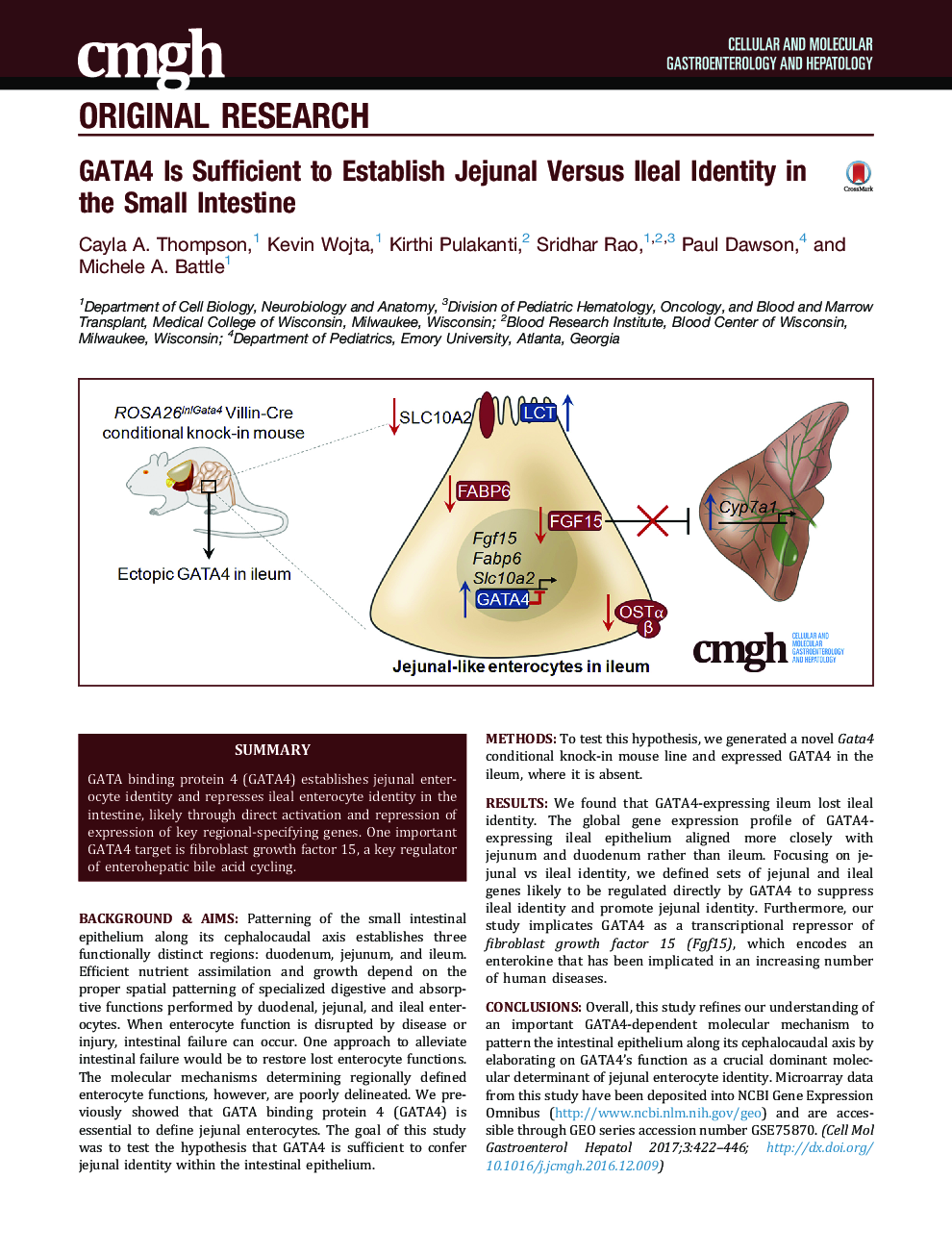| Article ID | Journal | Published Year | Pages | File Type |
|---|---|---|---|---|
| 5517230 | CMGH Cellular and Molecular Gastroenterology and Hepatology | 2017 | 25 Pages |
Background & AimsPatterning of the small intestinal epithelium along its cephalocaudal axis establishes three functionally distinct regions: duodenum, jejunum, and ileum. Efficient nutrient assimilation and growth depend on the proper spatial patterning of specialized digestive and absorptive functions performed by duodenal, jejunal, and ileal enterocytes. When enterocyte function is disrupted by disease or injury, intestinal failure can occur. One approach to alleviate intestinal failure would be to restore lost enterocyte functions. The molecular mechanisms determining regionally defined enterocyte functions, however, are poorly delineated. We previously showed that GATA binding protein 4 (GATA4) is essential to define jejunal enterocytes. The goal of this study was to test the hypothesis that GATA4 is sufficient to confer jejunal identity within the intestinal epithelium.MethodsTo test this hypothesis, we generated a novel Gata4 conditional knock-in mouse line and expressed GATA4 in the ileum, where it is absent.ResultsWe found that GATA4-expressing ileum lost ileal identity. The global gene expression profile of GATA4-expressing ileal epithelium aligned more closely with jejunum and duodenum rather than ileum. Focusing on jejunal vs ileal identity, we defined sets of jejunal and ileal genes likely to be regulated directly by GATA4 to suppress ileal identity and promote jejunal identity. Furthermore, our study implicates GATA4 as a transcriptional repressor of fibroblast growth factor 15 (Fgf15), which encodes an enterokine that has been implicated in an increasing number of human diseases.ConclusionsOverall, this study refines our understanding of an important GATA4-dependent molecular mechanism to pattern the intestinal epithelium along its cephalocaudal axis by elaborating on GATA4's function as a crucial dominant molecular determinant of jejunal enterocyte identity. Microarray data from this study have been deposited into NCBI Gene Expression Omnibus (http://www.ncbi.nlm.nih.gov/geo) and are accessible through GEO series accession number GSE75870.
Graphical abstractDownload high-res image (301KB)Download full-size image
